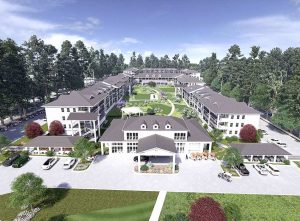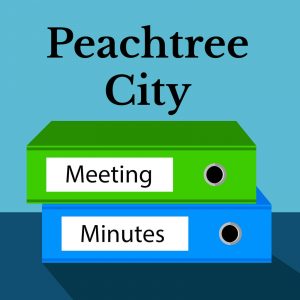Senior Planner: City’s venerable multi-village concept “needs to be modernized” —
Peachtree City is wearing out, and we’ve got to figure out how to pay for repairing and fixing it up. That’s the gist of a context-setting introduction from Mayor Vanessa Fleisch at a March 5 City Council workshop that stretched for 3 hours at City Hall.
(Watch the video of the entire workshop at The Citizen Facebook page.)
“Due to the poor condition of the city, we were in continual crisis mode,” Fleisch said of the months leading up to the city’s 60th anniversary of its founding as a planned community. She noted the problems with Lake Peachtree, its now-rebuilt dam, “failing stormwater drains” and the lack of space for incoming businesses.
She said the city has faced almost daily examples of things breaking “because of builder-grade materials that were never installed for longevity.”
The meeting purpose, according to City Manager Jon Rorie, is to find a path forward for the next half century. With 24 square miles and a population of 35,000, “we are almost at a built-out situation,” he said.
A subsequent slide show discussed transportation issues and redevelopment of some existing areas of the city, with special emphasis on creating a city center in the area from Lake Peachtree west to include Willowbend Center and Aberdeen Village shopping center.
He contrasted a survey of local residents that showed traffic congestion is the the number one concern, followed by crime, noting that crime in the city is among the lowest of any city its size.
Senior Planner Robin Cailloux reported that one out of every four single family homes in the city is rental property, and there’s very little land left in the city limits that’s zoned for residential — 371 acres. Commercially zoned land is even scarcer — 56 acres. While the city has 235 acres of industrially zoned land, most are lots under 8 acres, an unattractive option for industrial clients. Only two lots are left that range from 30 to 40 acres.
Vacancy rates for commercial uses are only 5 percent, office space 10 percent, and industrial vacancies are 2 percent, meaning there are not many available to rent or buy.
Cailloux downplayed the phrase “retail catastrophe” supposedly caused by online-based retailers, the principal one being Amazon. “The online sales are only 10 percent of the total retail sales, but that number has doubled in 10 years,” she said.
She said the city’s plan was set at 75/25 residential to commercial to provide a more equitable tax base not dependent on residences only. “Right now, that ratio is 80/20,” she said.
Cailloux said the city’s venerable village-based concept “needs to be modernized.”
One way to make that work is the Community Improvement District whereby a group of commercial property owners within a geographic area may choose to band together and self-impose additional property taxes on themselves to fund improvements that a local government can’t or won’t make.
Cailloux also mentioned the possibility of private developers partnering with governments to upgrade a commercial area. And she noted the Aberdeen Village proposal to build a mix of 190 apartments in multistory buildings and a restaurant-bar-retail area in the same area.
During a discussion on county-listed road projects, virtually the entire council strongly opposed ever building the TDK connector into Coweta County.











Leave a Comment
You must be logged in to post a comment.